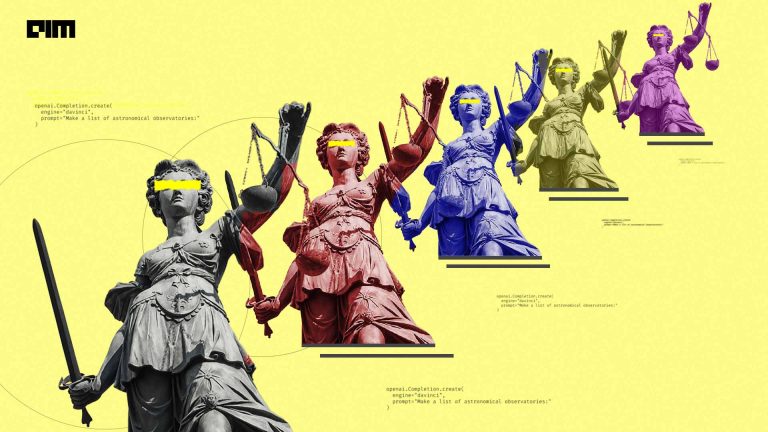|
Listen to this story
|
Recalling the times of non-interactive links and static web pages, accessed mainly via dial-up, all that comes to mind is web1.0 transitioning to web2 amidst the dotcom bubble – all in the millennium era. And now, web3, which is disrupting the internet at unprecedented levels, is trending with the introduction of crypto, NFTs, and blockchain in the global markets.
Web3 is a blend of the modern web and its predecessors, decentralised in a form that has gained significant attention and debate. Processing information in a human-like way through machine learning, decentralised ledger technology and big data is the USP of this third-generation internet known as web3.
Here, we are going to debunk the myths around web3, which must be addressed in order to make it seamless.
Blockchain
In simpler terms, blockchain means a computer file for keeping data. It’s a distributed open database or ledger across many systems or computers, hence decentralised (without third-party involvement). Its transparency has offered blockchain the ultimate traction, giving no one central point for attackers to hack it. However, what’s disappointing right now is how these myths surround its identity.
Blockchain is heavily looked down upon for its security and privacy. The myth around its verification needs to be busted, as this whole process is completely secure through hashing. Therefore, the privacy of your data is totally safe and depends on public or private version factors. For instance, public blockchain is permissionless, allowing anyone to become a node by gaining access to join the network. However, it can only be identified through a public key (taken from a privately held key). On the other hand, a private blockchain is a bank-operated system in which users require authorisation to access, read or write information, providing more confidentiality to their data. This implies that both are safe.
Another myth compares the value of Bitcoin with that of blockchain, which may often be used interchangeably. Indeed, Bitcoin has no identity without the blockchain, and this technology underpins Bitcoin. Yet, they are highly differentiated on various grounds. For example, the difference in smart contract execution, maintaining transparent records, auditing the supply chain, and transferring information are some of these pointers. Nevertheless, blockchain does stand out in certain aspects, followed by distributed databases and transparency, which makes it exist beyond Bitcoin.
Cryptocurrency
While we mention blockchain, which caters to several issues, private and public, it becomes equally crucial to mention the common link between cryptocurrency, blockchain, and Bitcoin when it comes to Web3. Bitcoin is a cryptocurrency that works on the concept of blockchain, along with others like Ethereum, Ripple, etc. Introduced in 2009, it gained popularity and also courted rumours within that period. The most popular myth about crypto suggests its use in illegal activities. Studies claimed to interlink criminal organisations with digital currencies, suggesting their illegal use, just like any other form of money throughout history. This point is still not backed up with facts.
In this wake, Chainalysis reported,“ Total transaction volume grew to $15.8 trillion in 2021, up 567% from 2020’s totals, transactions involving illicit addresses represented just 0.15% of cryptocurrency transaction volume in 2021, which is lower than expected.”
The safety of transactions with the linked blocks, encryptions, and consensus mechanisms, makes it next to impossible to “steal” the cryptocurrency on the blockchain.
“The government is open to promoting innovation and well-grounded progress made in the distributed ledger technologies, which are coming in the blockchain,” said Finance Minister Nirmala Sitharaman, amid ongoing concerns about misuse of crypto.
NFT
The use of NFT (non-fungible tokens) has increased dramatically over the last year and these are being sold at an impressive numerical value. This surely makes one question the myth regarding the NFT bubble burst. NFTs are digital assets having a uniquely verifiable quality. Non-fungible signifies no state of free interchange on a one-on-one or duplicate basis. They can be seen on the blockchain’s public ledger and are visible on all nodes.
The biggest myth around NFT is its relationship with cryptocurrency. Although they are both built on blockchains, the major difference lies in their fungibility. Crypto is a fungible asset, traded only with the asset holding the same value. Take the scenario of trading Ethereum only with another crypto having the exact value, unlike NFT. On the other hand, each NFT contains a unique and irreplaceable value. Therefore, NFTs represent a digital asset, not a currency.
Followed by another clarification of its identity as an asset, which says it’s not just the asset but a uniquely represented digital data record linked to an (mainly digital) asset by associating the token cryptographically with the asset. In other words, NFT is simply separated from the asset, but a key to finding the asset is referred to as digital assets or ‘hash’. Moreover, it’s the NFT, not an asset stored on the blockchain’s digital ledger.
Moreover, blockchain is the platform where NFTs are sold, which makes you doubt its environmental impact. But in reality, most of this process is sourced from renewable energy modes, for eg. the upcoming Ethereum merger, where most NFTs are traded, is shifting from POW(proof of work) to POS (proof of stake).



















































































